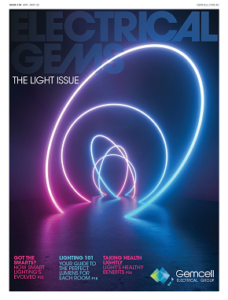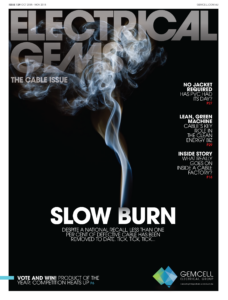Out Now
The Aussie Issue
Current Issue
The Aussie Issue
DEC 25 - JAN 26

Aircon units are a vital part of almost every Australian home, and if you work with them, they bring responsibility too, explains Sean Russell from Master Electricians Australia.
Most Australian households now have air conditioning installed and over the summer months they are vital machines for maintaining a habitable environment for many premises. You and your clients do not want to be stuck in the heat with units that are not running at optimum performance because they have been neglected or not been sufficiently maintained. Not only could air conditioning fail resulting in repairs and hefty bills, you may also be stuck with higher energy bills and insufficient cooling, resulting in disgruntled customers.
An air conditioner’s filters, coils, drainage, and fins require regular maintenance for the unit to function effectively and efficiently throughout its years of service. Common problems that occur with neglected units include; blocked filters, failed or faulty thermostats, refrigerant leaks, blocked drainage, failed or faulty capacitors, compressor failure, worn contacts in the electrical connections for the compressor, blower motor or condenser fan. Arcing or pitting of contacts can result in dirty or damaged contacts which ultimately fail. Neglecting necessary maintenance ensures a steady decline in air conditioning performance while energy use steadily increases.
Regular maintenance is a great habit to get into, resulting in a well-functioning system, a healthier home environment and lower energy bills. From a homeowner’s point of view, it should be easy: following the manufactures instructions clean or replace the filters, clean leaves, dust, or dirt out of the outdoor units, ensure the condensation drain is clear of debris and book in a local electrical contractor to conduct an annual check and maintenance inspection.
For the sparkie — never attempt maintenance work that you are not competent and licensed to do. Prior to commencing work ensure you have put safety first. Before doing any maintenance or electrical work that may require you to be near live parts make sure you render the system safe by isolating and locking off the circuit breaker or local isolator.
Older units may not have the lockable isolators although they may have complied at the time of installation. A few key things to know about this situation is that under clause 2.6.3.2.6 of AS/NZS 3000, the unit may look, or even be, brand new because of the repair clause. You can replace with an equivalent item in the same location without needing to bring up to current standards.
If you extend, shorten, or move the wiring and if you change the load requirements of that circuit, for example it was on a 16A breaker and it now requires a 20A, this turns into an Alteration (AS/NZS 3000, 2.6.3.2.5) which will trigger the requirement to comply with today’s standards, for example RCDs and lockable isolators.
A common misconception is that if the outdoor unit is close to the switchboard, it does not need an isolator. This is not the case, air conditioning and heat pump systems incorporating a compressor shall be provided with an isolating switch (lockable) in accordance with AS/NZS 3000 Clause 2.3.2.2. Isolators must be installed adjacent to but not on the unit, which isolates all parts of the system, including ancillary equipment, such as head units, from the same location and this is regardless of how close they are to the switchboard.
The only exception to this is the isolating switch may be installed at the switchboard supplying the system if the switchboard is dedicated to the equipment (for example an air conditioning plant room).
Keep up to date with our latest news and competitions by subscribing to our regular newsletter.

Issue 189
OCT - NOV 2025

Issue 188
AUG - SEPT 2025

Issue 187
JUN - JUL 2025

Issue 186
APR - MAY 2025

Issue 185
FEB - MAR 2025

Issue 184
DEC 2024 - JAN 2025

Issue 183
OCT - NOV 2024

Issue 182
AUG - SEPT 2024

Issue 181
JUN - JUL 2024

Issue 180
APR - MAY 2024

Issue 179
FEB - MARCH 2024

Issue 178
DEC 2023 - JAN 2024

Issue 177
OCT - NOV 2023

Issue 176
AUG - SEPT 2023

Issue 175
JUN - JUL 2023

Issue 174
APR - MAY 2023

Issue 173
FEB - MAR 2023

Issue 172
DEC 2022 - JAN 2023

Issue 171
OCT - NOV 2022

Issue 170
AUG - SEPT 2022

Issue 169
JUN - JUL 2022

Issue 168
APR - MAY 2022

Issue 167
FEB - MAR 2022

Issue 166
DEC 2021 - JAN 2022

Issue 165
OCT - NOV 2021

Issue 164
AUG - SEPT 2021

Issue 163
JUN - JUL 2021

Issue 162
APR - MAY 2021

Issue 161
FEB - MAR 2021

Issue 160
DEC 2020 - JAN 2021

Issue 159
OCT - NOV 2020

Issue 158
AUG - SEPT 2020

Issue 157
JUN - JUL 2022

Issue 156
APR - MAY 2020

Issue 155
FEB - MAR 2020

Issue 154
DEC 2019 - JAN 2020

Issue 153
OCT - NOV 2019

Issue 152
AUG - SEPT 2019

Issue 151
JUN - JUL 2019

Issue 150
APR - MAY 2019

Issue 149
FEB - MAR 2019

Issue 148
DEC 2018 - JAN 2019

Issue 147
OCT - NOV 2018

Issue 146
AUG - SEPT 2018

Issue 145
JUN - JUL 2018

Issue 144
APR - MAY 2018

Issue 143
FEB - MAR 2018

Issue 142
DEC 2016 - JAN 2017

Issue 141
OCT- NOV 2017

Issue 140
AUG - SEPT 2017

Issue 139
JUN - JUL 2017

Issue 138
APR - MAY 2017

Issue 137
FEB - MAR 2017

Issue 136
DEC 2016 - JAN 2017

Issue 135
OCT - NOV 2017

Issue 134
AUG - SEPT 2016

Issue 133
JUN - JUL 2016

Issue 132
APR - MAY 2016

Issue 131
FEB - MAR 2016

Issue 130
DEC 2015 - JAN 2016

Issue 129
OCT - NOV 2015

Issue 128
AUG - SEPT 2015

Issue 127
JUN - JUL 2015

Issue 125
APR - MAY 2015

Issue 125
FEB - MAR 2015

Issue 124
DEC 2014 - JAN 2015

Issue 123
OCT - NOV 2014

Issue 122
AUG - SEPT 2014

Issue 121
JUN - JUL 2014

Issue 120
APR - MAY 2014

Issue 119
FEB - MAR 2014

Issue 118
DEC 2013 - JAN 2014

Issue 117
OCT - NOV 2013

Issue 116
AUG - SEPT 2013

Comments (0)
Write a Comment